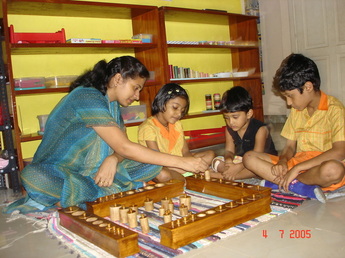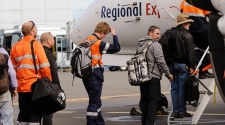Increasing standardization in the US public school system can give the impression that there’s just one way to approach education. In fact, there are many different teaching methods in use around the world. Some are well suited to particular cultures, and others suit specific types of children, but there are lessons to be learned from many of them. These are among the most celebrated methods.
The Berlitz method

A ‘natural’ approach to language learning, the Berlitz method disregards formal learning and instead throws students in at the deep end. Told not to use their native tongue, they’re obliged to communicate in the language they’re trying to learn or use gestures or mime. In this situation, they’re quick to pick up the words provided as explanations of what they’re trying to convey, and they learn much as babies do – and very fast.
The Montessori method

The Montessori method takes a similar approach to other kinds of learning by introducing children to a naturally stimulating environment that contains interesting materials with which they can interact. They change over time, enabling children to take an exploratory, creative approach to learning. Teachers introduce subjects and provide individual advice to help children discover important scientific and social ideas for themselves.
Collaborative learning

With more and more schools now using technology in the classroom, collaborative learning brings students together in different locations via the internet, so they can assist each other to research, interpret and understand new ideas. Teachers are there to provide support, but the peer-based approach helps children engage fully with the subject so that they absorb and retain more information.
Maker education

Bringing together STEM learning and the creative arts, maker education involves providing children with supplies and encouraging them to be creative, especially with technological projects. The thinking behind it is that we do much of our learning with our hands and that making something with real-world usefulness helps the principles of engineering, electronics and so forth stick in children’s minds, and boosts their confidence.
Bringing it all together

Admitting students from many different countries, the international school SAIS, Singapore, works to help each student reach a point where they can share lessons productively. That requires a deep understanding of the different learning culture and a willingness to incorporate the best elements of each going forward. Far from confusing children, encountering others from different backgrounds can have a positive effect on learning outcomes. As they discuss the new ideas they’re presented with in class their different perspectives help them to enlighten each other, giving all involved a deeper understanding of the topic.
It’s unlikely that there will ever be a perfect system of education because children’s needs change as the world presents new demands and challenges. The existence of the different teaching methods, however, makes it easier to understand the intellectual and psychological processes of learning, so techniques can continuously be refined to make them more effective. With new technology also making a significant contribution toward education, today’s children are better equipped to learn than any previous generation.












